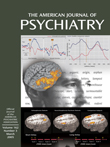The late Ernest Gruenberg often said that “American academia produces two types of psychiatrists: mindless or brainless.” Nowhere has this become more prophetic than in the deemphasis of psychosocial treatments among many psychiatrists. Psychiatric physicians now represent themselves as psychopharmacologists who spend a few minutes with patients, manipulate drugs, and send the patients on their way. Psychosocial interventions are relegated to those with “inferior training,” so that the “well-trained” psychiatrist need not waste his or her time getting to know the patient and the patient’s problems. This is not meant in any way to deprecate the importance of a thorough knowledge of pharmacologic interventions but, rather, to recognize the unique role of the psychiatrist as the only mental health professional trained both psychosocially and biologically. It is an unfortunate consequence of the success of medications that many psychiatrists have felt it no longer necessary to spend time understanding the complexity of the patient’s life and life experiences.
This small volume is a welcome antidote to this situation. It is an effort to provide the practitioner with an understanding of diagnostic and clinical issues viewed from a psychosocial perspective so that the clinician can provide appropriate therapy for bipolar disorder. It recognizes the vital need for a comprehensive and integrated approach using both medication and psychosocial interventions.
It has both the virtues and deficiencies of all multiauthored texts. The chapters vary both in style and in quality. Nevertheless, the overall quality of the volume is excellent.
A particular virtue of this volume is the recognition of the underdiagnosis of bipolar disease in its early stages. It is far wiser to diagnose bipolar depression incorrectly rather than incorrectly diagnose unipolar depression in its early stages. There is little danger from the additional use of mood stabilizers, but much danger in the failure to recognize their necessity in the management of a particular case until the person is rapid cycling.
The authors recognize the obvious fact that the potential for bipolar illness does not guarantee the development of a bipolar illness. Psychosocial variables can act as precipitating events, and the management of these factors can be critical to the patient’s treatment.
There are excellent reviews of different forms of psychosocial intervention as well as a review of special issues such as compliance and the risk of suicide. The reviews of psychosocial approaches and their integration into pharmacologic management can benefit virtually every clinician. It is a rather sad commentary that the book had to be edited by psychologists, in order to bring back to psychiatrists that which they never should have abandoned.

